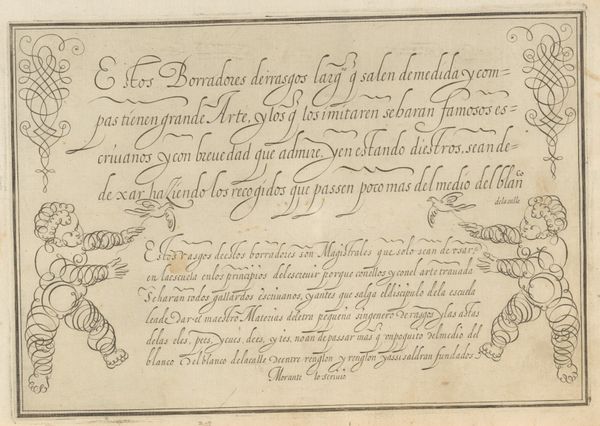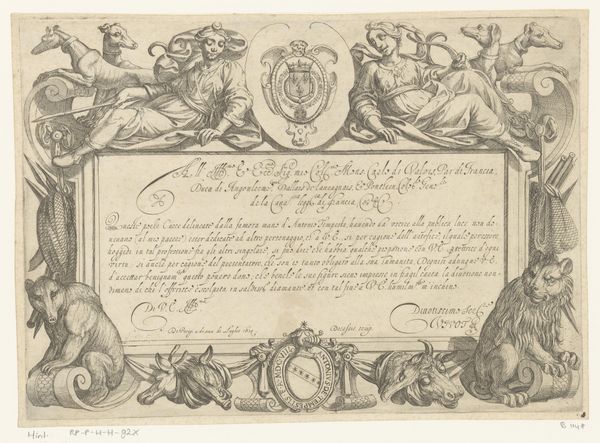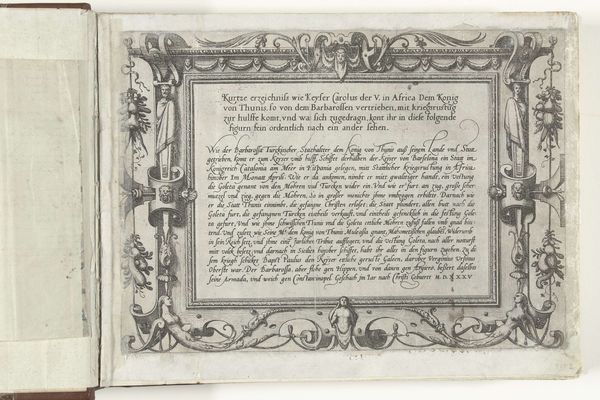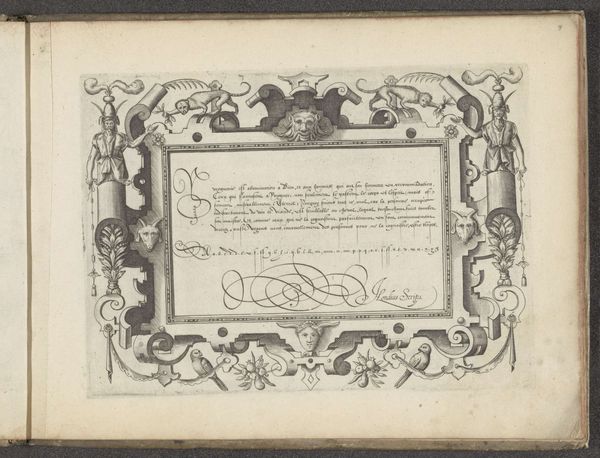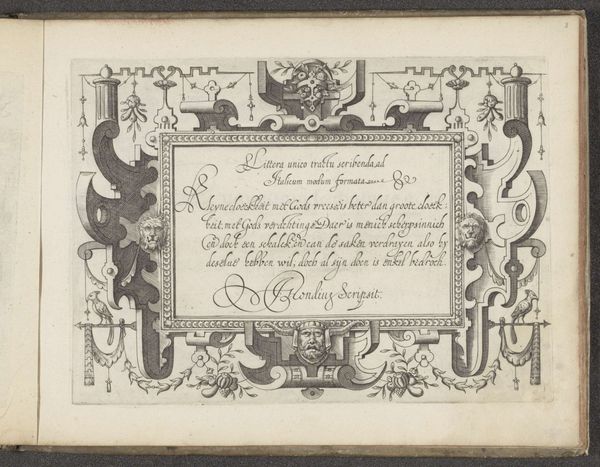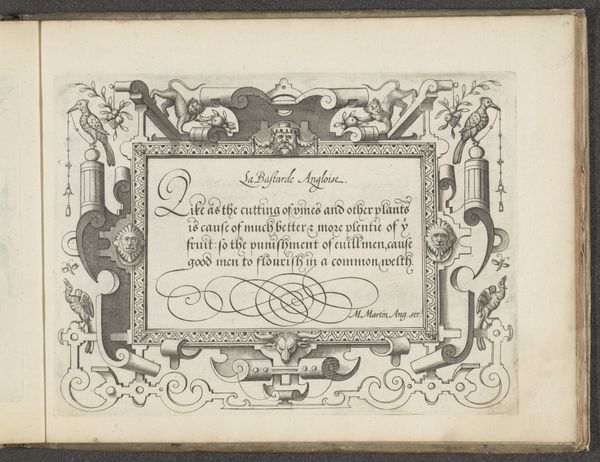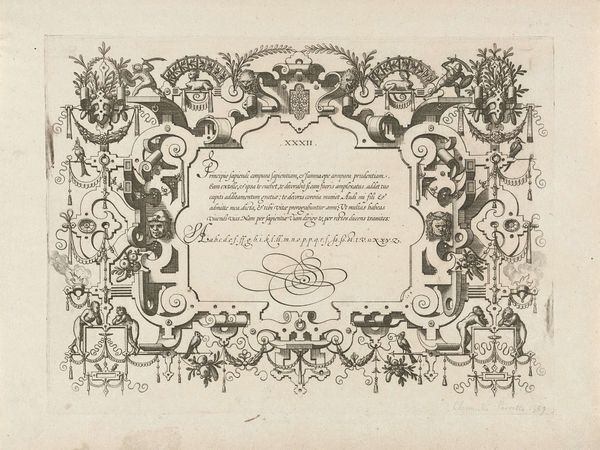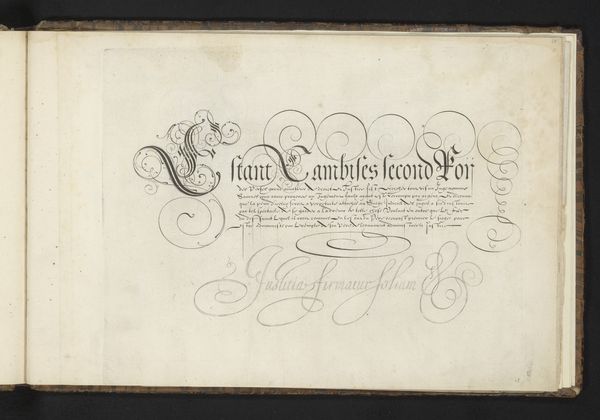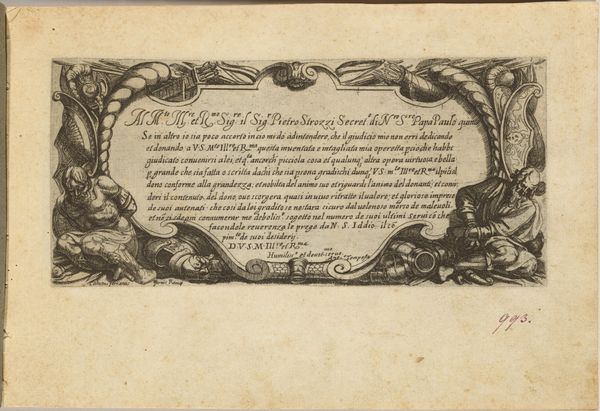
drawing, print, metal, engraving
#
drawing
#
baroque
#
pen drawing
# print
#
metal
#
pen illustration
#
old engraving style
#
italian-renaissance
#
engraving
Dimensions: height 97 mm, width 138 mm
Copyright: Rijks Museum: Open Domain
Curator: Here we have a 1598 engraving by Antonio Tempesta, called "Cartouche met opdracht, leeuw en luipaard," or “Cartouche with dedication, lion and leopard." It's held at the Rijksmuseum. Editor: It gives off this opulent yet slightly unsettling vibe. The animals feel very alert, perched above the ornate text, which by the way, I'd love to know more about what it says. Curator: Indeed, the prominent lion and leopard are heraldic symbols flanking a smaller shield. The text below, a dedication written in Italian, offers praise to a patron, suggesting a complex social structure of nobility, patronage and hierarchy. The very act of engraving as printmaking suggests also, it was meant for a public display, for wider awareness of who is giving, who is receiving, and their relation. Editor: So, in effect, it's public performance of power dynamics, using visual language? The contrast between the wild animals, symbols of raw power, and the controlled, formalized script, almost seems like a negotiation of control. How much could someone actually deviate against established hierarchies? Were artists more subversive than we assume? Curator: Interesting angle. Tempesta, active during the late Renaissance and early Baroque periods, definitely catered to aristocratic tastes, we know, creating grand battle scenes and mythological landscapes. So this heraldic display absolutely aligns with showcasing established authority and Italian nobility of the era. Think about who held that artistic patronage in Rome and elsewhere in Italy at the time, it really underscores these works served very real functions to establish wealth, connection, and allegiance. Editor: It is compelling to consider the historical setting as its cultural backdrop. Perhaps what seems merely ornamental, really reflects that struggle for status and influence—something these visual allegories reveal—then and even now. Curator: Agreed, reflecting on this engraving reminds us how artists like Tempesta, and art objects themselves, participated actively in shaping socio-political norms, by showcasing ideals or indirectly signaling resistance through symbols. Editor: It is those threads, across time that really solidify our appreciation for these older artworks and enable continued relevance in the modern landscape.
Comments
No comments
Be the first to comment and join the conversation on the ultimate creative platform.

